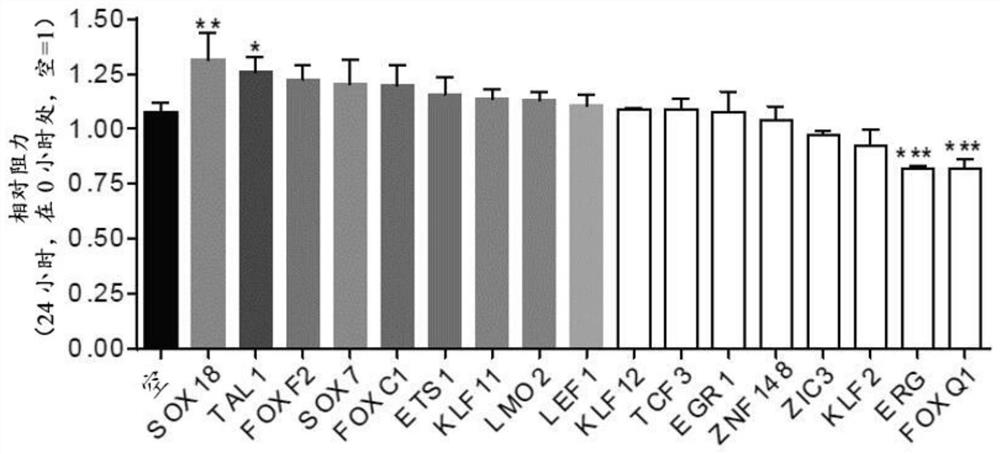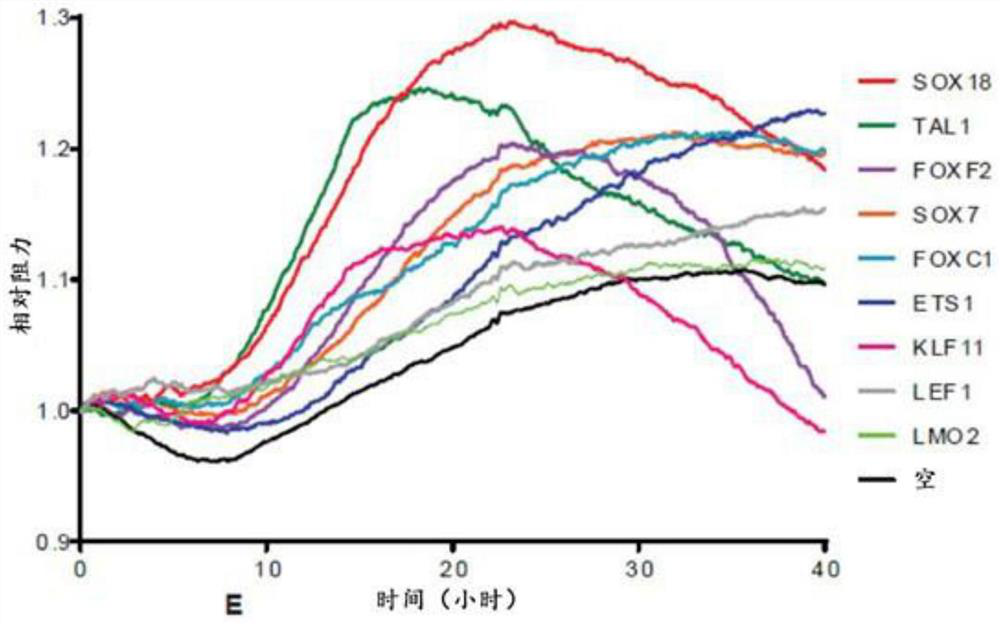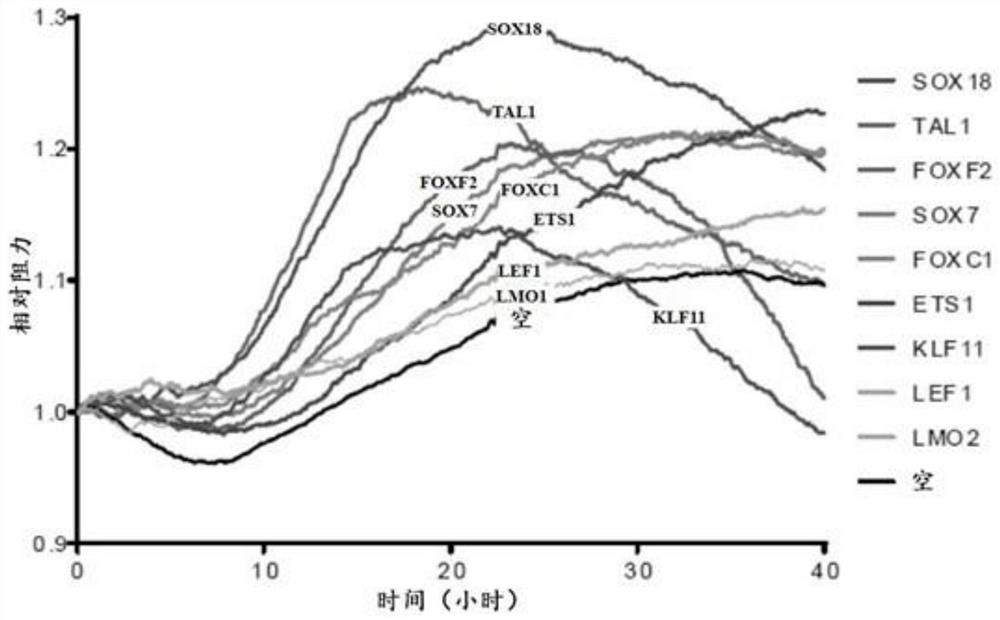Synergistic transcription factors to induce high resistance transendothelial barrier
A technology for transcription factors and endothelium, applied in the field of transcription factors, can solve problems such as difficult to apply to drug development, difficult to reproduce accurately, and highly complex models.
- Summary
- Abstract
- Description
- Claims
- Application Information
AI Technical Summary
Problems solved by technology
Method used
Image
Examples
example 1
[0191]To identify transcription factors that can differentiate hPSC-ECs into ECs with high transendothelial barrier resistance, published expression datasets from different mouse vascular beds were analyzed (Tam SJ, Richmond DL, Kaminker JS, Modrusan Z, Martin-McNulty B, Cao TC et al. Developmental cell. 2012; 22(2):403-17., Coppiello G, Collantes M, Sirerol-Piquer MS, Vandenwijngaert S, Schors S, Swinnen M et al. Circulation. 2015; 131(9) :815-26, Nolan DJ, Ginsberg M, Israel E, Palikuqi B, Poulos MG, James D et al. Developmental cell. 2013;26(2):204-19). Fold change expression in studies between brain ECs and other vascular bed ECs was calculated for all transcription factors (Ravasi T, Suzuki H, Cannistraci CV, Katayama S, Bajic VB, Tan K et al. Cell. 2010; 140(5 ):744-52). Transcription factors that were highly upregulated (>2FC) in ECs in the brain were identified. Next, gene expression data from a recent brain EC single-cell expression profiling study (1445 cells were ...
example 2
[0193] As transcription factors work in networks (Neph S, Stergachis AB, Reynolds A, Sandstrom R, Borenstein E, Stamatoyannopoulos JA. Cell. 2012;150(6):1274-86), we have explored the use of lower levels of Possibility of transcription factors (20 MOI) and other factors. First, we have overexpressed a single transcription factor at 20 MOI and assessed resistance. After 24 hours after resistance stabilization, we failed to observe any significant induction of ( Figure 2A ). In real-time ECIS measurements, no significant induction of barrier resistance was observed, only a propensity for SOX18 to be used for barrier induction. In the FITC-dextran assay, SOX18 caused a significant decrease in the permeability of the EC barrier, whereas TAL1 was found to increase permeability, as the effect had diminished after 48 hours ( Figure 2B ). Those transcription factors shown to be inducible barriers were next combined either as single factors (SOX18, TAL1) or capable of inducing ge...
PUM
 Login to View More
Login to View More Abstract
Description
Claims
Application Information
 Login to View More
Login to View More - R&D
- Intellectual Property
- Life Sciences
- Materials
- Tech Scout
- Unparalleled Data Quality
- Higher Quality Content
- 60% Fewer Hallucinations
Browse by: Latest US Patents, China's latest patents, Technical Efficacy Thesaurus, Application Domain, Technology Topic, Popular Technical Reports.
© 2025 PatSnap. All rights reserved.Legal|Privacy policy|Modern Slavery Act Transparency Statement|Sitemap|About US| Contact US: help@patsnap.com



